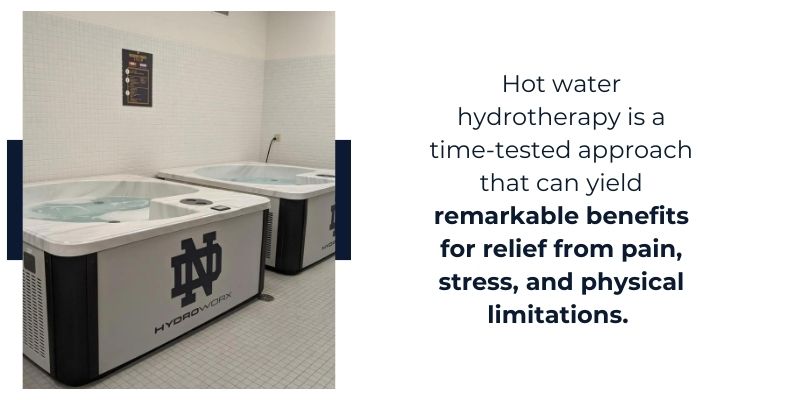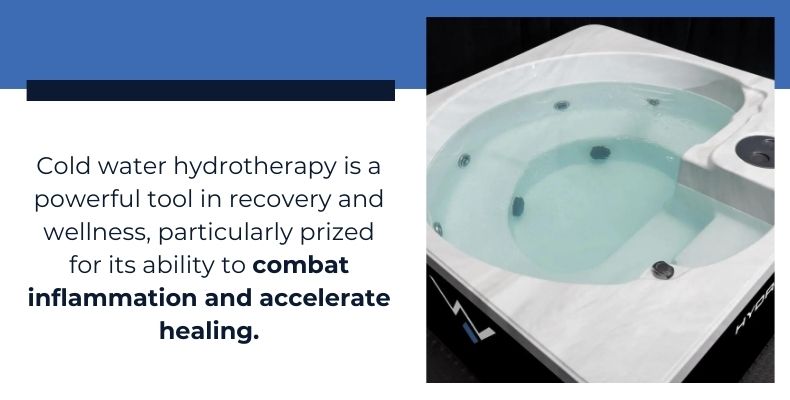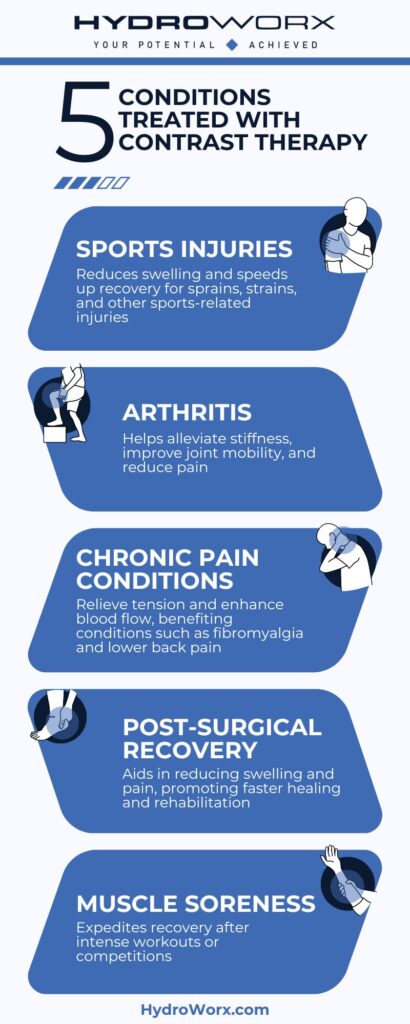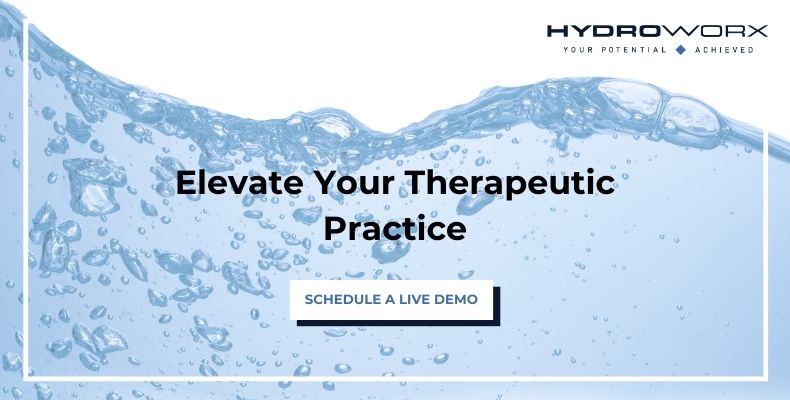The Varying Effects of Hot and Cold Water in Hydrotherapy
Hydrotherapy has long been recognized for its therapeutic benefits, offering a holistic approach to rehabilitation and wellness. Among the many factors influencing its effectiveness, the temperature of the water plays a crucial role. Hot and cold water therapies each offer unique advantages that can significantly enhance recovery processes and overall well-being.
Hot water therapy is known for its muscle-relaxing properties and ability to improve blood circulation, making it ideal for treating chronic pain and stiffness. Conversely, cold water therapy excels in reducing inflammation and pain, making it a go-to choice for athletes and those recovering from injuries.
In this blog article from HydroWorx, we’ll discuss the varying effects of hot and cold water in hydrotherapy, explore their benefits, and highlight how combining these treatments can lead to optimal results. Join us as we uncover the science behind these powerful therapeutic techniques and their impact on health and healing.

The Benefits of Hot Water in Hydrotherapy
Hot water hydrotherapy is a time-tested approach that can yield remarkable benefits for individuals seeking relief from pain, stress, and physical limitations. The warmth of hot water acts as a soothing balm, promoting relaxation and enhancing circulation, which can be vital for recovery and overall well-being. This therapy is particularly beneficial for those dealing with chronic pain or muscle tension, as it creates an environment conducive to healing. Let’s explore some of the key advantages of hot water in hydrotherapy:
- Muscle Relaxation: The heat from hot water helps to relax tight muscles, alleviating tension and promoting flexibility.
- Improved Circulation: Hot water dilates blood vessels, enhancing blood flow and oxygen delivery to tissues, which aids in the healing process.
- Pain Relief: The soothing effects of hot water can provide relief from chronic pain conditions, such as arthritis and fibromyalgia.
- Stress Reduction: Immersion in hot water can trigger the release of endorphins, leading to reduced stress and a sense of overall well-being.
- Enhanced Joint Mobility: The warmth helps to increase the elasticity of connective tissues, making movement easier and more comfortable.

The Benefits of Cold Water in Hydrotherapy
Cold water hydrotherapy is a powerful tool in recovery and wellness, particularly prized for its ability to combat inflammation and accelerate healing. The brisk sensation of cold water triggers essential physiological responses in the body that can alleviate pain and promote recovery. This therapy is especially beneficial for athletes and individuals recovering from acute injuries, as it allows for targeted treatment of affected areas. Here are some key benefits of cold water in hydrotherapy:
- Reduces Inflammation: Cold water constricts blood vessels, which can help decrease swelling and inflammation in injured or sore areas.
- Numbs Pain: The cold sensation can temporarily numb nerve endings, providing quick pain relief, particularly after strenuous activity.
- Accelerates Recovery: Immersing in cold water post-exercise can help flush out metabolic waste products, facilitating faster recovery and reducing soreness.
- Enhances Athletic Performance: Cold water treatments can improve muscle performance and endurance by reducing fatigue and limiting post-workout soreness.
- Eases Symptoms of Chronic Conditions: Cold water therapy can benefit individuals with conditions such as tendonitis or bursitis, helping diminish pain and improve mobility.
The Science Behind Temperature Regulation
Understanding the physiological responses of the body to temperature variations during hydrotherapy is crucial for appreciating its benefits. Both hot and cold water therapies elicit specific reactions from the human body, which can aid in healing and enhance overall wellness. The science behind temperature regulation highlights how these therapies impact blood circulation, muscle function, and pain perception. Here’s a deeper look into the mechanisms at work:
- Vasodilation and Vasoconstriction: Hot water induces vasodilation, where blood vessels expand, increasing blood flow to tissues. This enhances oxygen delivery and aids in the healing of injured areas. Conversely, cold water causes vasoconstriction, which reduces blood flow, minimizes inflammation, and helps to prevent further injury.
- Muscle Response: Heat warms and relaxes muscles, improving flexibility and reducing stiffness. Cold temperature, on the other hand, tightens muscles, which can decrease spasms and numb pain.
- Metabolic Effects: Exposure to cold water stimulates the metabolism, enhancing recovery by promoting the removal of toxins. Hot water can boost metabolic rates, which aids in the healing process.
- Endorphin Release: Both therapies trigger the release of endorphins, the body’s natural pain relievers, contributing to pain reduction and an improved sense of well-being.

Combining Hot and Cold Water Treatments for Optimal Results
The integration of hot and cold water treatments in hydrotherapy, known as contrast hydrotherapy, offers a comprehensive approach to healing and recovery. This technique utilizes the benefits of both temperature modalities, effectively enhancing circulation, reducing muscle soreness, and accelerating recovery times. By alternating between hot and cold water, practitioners can capitalize on the unique advantages each therapy offers. Here are some key benefits of combined treatments:
- Enhanced Circulation: Alternating temperatures stimulate blood flow and circulation more effectively than using either hot or cold alone, improving oxygenation and nutrient delivery to tissues.
- Reduced Muscle Soreness: The contrasting temperatures can help flush out lactic acid and metabolic waste, leading to decreased muscle soreness and improved recovery post-exercise.
- Pain Management: The combination of relaxation from hot water and the pain-numbing effect of cold water can provide comprehensive pain relief for chronic conditions and acute injuries.
- Improved Flexibility: The warm water prepares muscles and joints for movement, while cold water can help lock in that flexibility, making it easier to perform physical activities.
- Psychological Benefits: Alternating temperatures can invigorate and energize individuals, creating a refreshing experience that enhances overall well-being.

Shop Hydrotherapy Equipment Today
Ready to elevate your therapeutic practice? Explore HydroWorx’s advanced hydrotherapy solutions, featuring both hot and cold water options. Contact us today to book a consultation, schedule a demo, and discover how our equipment can enhance recovery and well-being for your clients.

